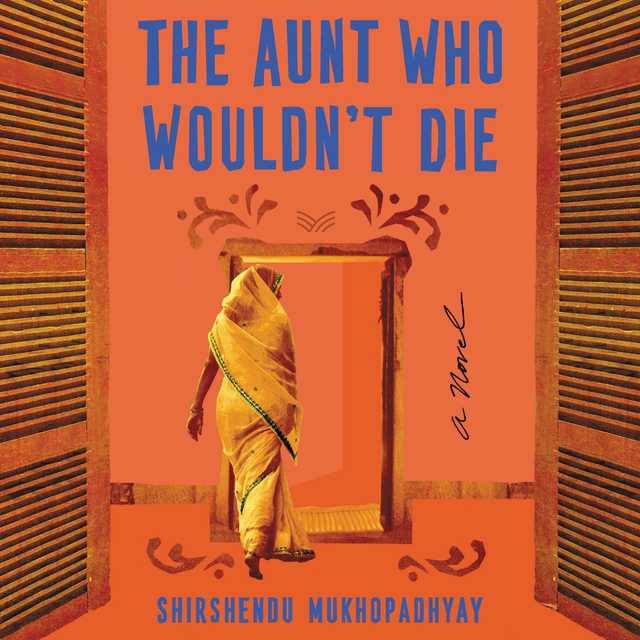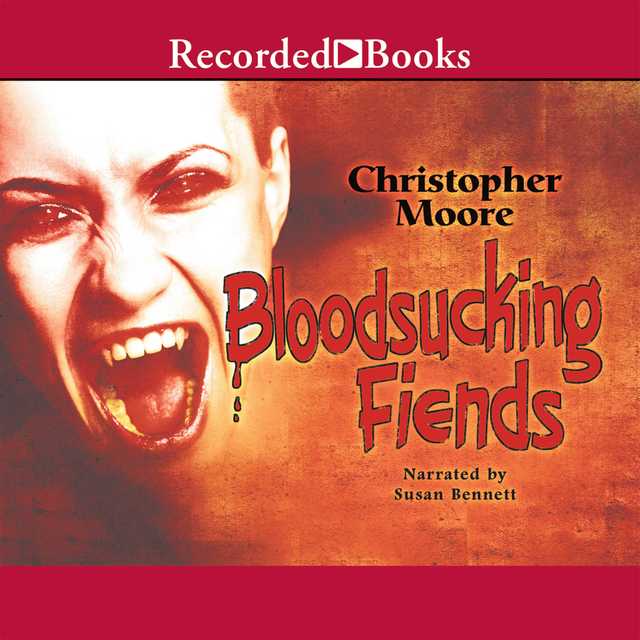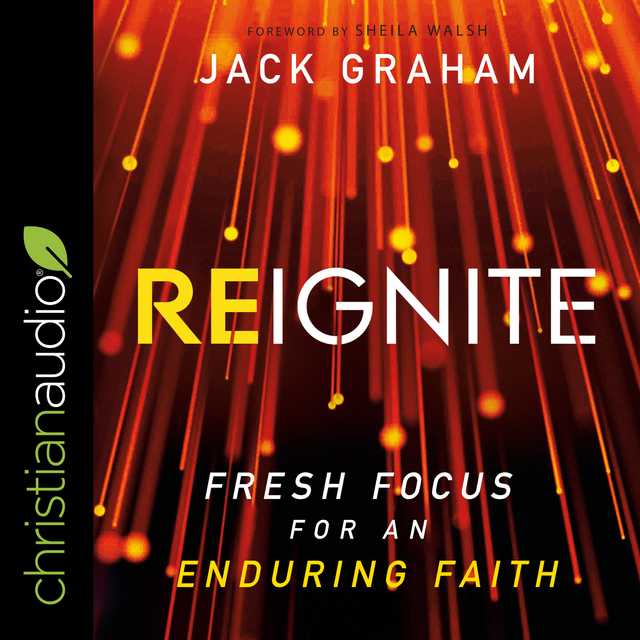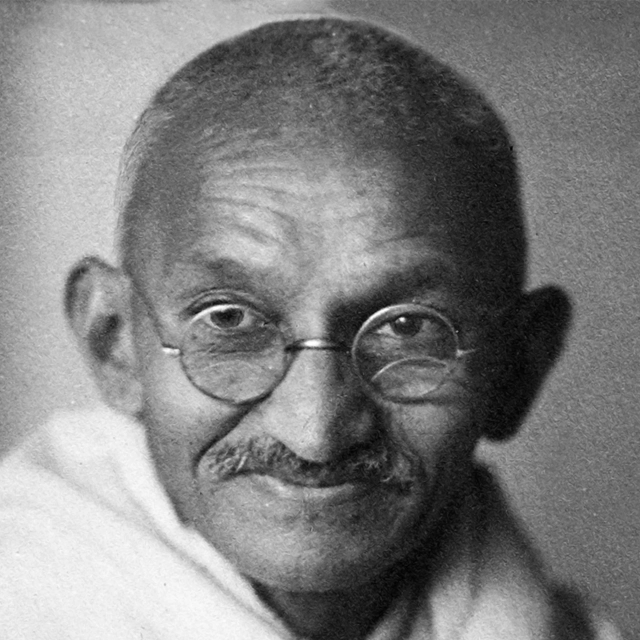The Aunt Who Wouldn’t Die Audiobook Summary
A laugh-out-loud, tug-at-your-heartstrings tale of love, family, and freedom centered around three generations of Bengali women.
Somlata has just married into the dynastic but declining Mitra family. At eighteen, she expects to settle into her role as a devout wife in this traditional, multi-generational family. But then Somlata, wandering the halls of the grand, decaying Mitra mansion, stumbles upon the body of her great aunt-in-law, Pishima.
A child bride widowed at twelve, Pishima has finally passed away at the ripe old age of seventy. But she isn’t letting go just yet. Pishima has long harbored a grudge against the Mitras for keeping her in perpetual widowhood, never allowed to fall in love.. Now, her ghost intends to meddle in their lives, making as much mischief as possible. Pishima gives Somlata the keys to her mysterious box of gold to keep it out of the Mitras’ hands. However, the selfless Somlata, witnessing her new family waste away their wealth to the brink of bankruptcy, has her own ideas.
Boshon is a book-loving, scooter-riding, rebellious teenager who wants nothing to do with the many suitors that ask for her hand. She yearns for freedom and wants to go to college. But when her poor neighbor returns from America she finds herself falling in love. Perhaps Pishima’s yearning spirit lives on in her own her heart?
The Aunt Who Wouldn’t Die is a frenetic, funny, and fresh novel about three generations of Mitra women who are surprising at every turn and defy all expectations. They may be guarding a box of gold, but they are the true treasures in this gem of a novel.
Other Top Audiobooks
The Aunt Who Wouldn’t Die Audiobook Narrator
Deepti Gupta is the narrator of The Aunt Who Wouldn’t Die audiobook that was written by Shirshendu Mukhopadhyay
Shirshendu Mukhopadhyay was born in 1935 in present-day Bangladesh. He earned a master’s degree from Calcutta University and worked for some time as a schoolteacher before becoming a journalist and author. The Aunt Who Wouldn’t Die is a much-loved contemporary classic in Bengali, and it was adapted into the film Goynar Baksho in 2013. The first English translation was published in India in 2017.
About the Author(s) of The Aunt Who Wouldn’t Die
Shirshendu Mukhopadhyay is the author of The Aunt Who Wouldn’t Die
More From the Same
- Publisher : HarperAudio
- Abraham
- American Gods [TV Tie-In]
- Dead Ringer
- House of Sand and Fog
- Prey
The Aunt Who Wouldn’t Die Full Details
| Narrator | Deepti Gupta |
| Length | 3 hours 15 minutes |
| Author | Shirshendu Mukhopadhyay |
| Publisher | HarperAudio |
| Release date | July 28, 2020 |
| ISBN | 9780062990358 |
Additional info
The publisher of the The Aunt Who Wouldn’t Die is HarperAudio. The imprint is HarperAudio. It is supplied by HarperAudio. The ISBN-13 is 9780062990358.
Global Availability
This book is only available in the United States.
Goodreads Reviews
Fran (apologies...way behind)
June 06, 2020
The Mitras used to be zamindars, feudal landlords in East Bengali but now household funds were dwindling. " The household runs with the money that comes from selling land and gold...the men in the family were not keen on employment or business...I have never considered employment-I can't be a clerk...I can't start a business-that's for shopkeepers".When Somlata married Fuchu, she was eighteen, he was thirty-two. According to Somlata, "...my parents were so poor that it would be an indulgence to make a fuss about the groom's age or employment status". "Family gold is sacred, family land, too. I've heard it's not right to sell off either of these". Somlata's cloistered life, based on social convention, was about to change. Taking baby steps, she would be the wind beneath her husband's wings, shaping, ever so carefully, her husband and a winning business enterprise.It started with Pishima, the "defacto" head of the family. married at seven, widowed at twelve, she was shut away. She was angry, bitter and full of rage. Passing Pishima's room one day, Somlata froze. Pishima sat still...eyes open...lips unmoving...but "[Somlata] could clearly hear her speak, 'Yes, I'm dead...the wretch is finally gone...take the keys from...my sari...go to the north room...find...a wooden box...hide it in your room...my favorite jewelry...nothing must be touched'."Where was Pishima's jewelry? Family members discussed its disappearance or possible theft. After all, they had expected to continue to live off the wealth created by Pishima's cache. Not so fast! Pishima might have died, but her ghost lives on. She appears to Somlata, dressed in a white sari, creating chaos and meting out advice...Cooking mutton?...smells divine...It'll be delicious, but you've forgotten the salt. Put plenty...that night everyone said the mutton was excellent, but there was too much salt".Somlata's daughter, Boshon represented a new generation. "I knew everything was guided by rules. I would have to tear myself away from this freedom, this abandon, this fantasy walk amid nature under an exquisite moon, and return home. Just as I will have to dress up in wedding finery one day and take my place on the bride's seat. I feel I will get by without a man".With humor and a push back against social convention, the reader meets three generations of Mitra women in "The Aunt Who Wouldn't Die" by Shirshendu Mukhopadhyay. It was a joy to read the positive voices of these women who question the old aristocratic mores which will eventually give way to freedom and encourage forward thinking women.Thank you HarperCollinsPublishers-Harper Via and Net Galley for the ARC in exchange for an honest review.
daph pink ♡
June 26, 2022
The aunt who wouldn't die honours women's strength and portrays their responsibilities in family and society at various points in history, both before and after independence.It's a witty and fascinating story about three Bengali women from three generations apart. Somlata, the Chowdhury family's freshly wedded daughter-in-law, transforms the path of her financially disadvantaged family with her sensible actions and foresight. Roshomoyee, Somlata's widowed aunt-in-law, offered an emotional and melancholy panorama of child widows' lives, as well as the dreams and desires of unfulfilled youth. Boshon, Somlata's daughter and the apple of the Chowdhury family's eye, is depicted as a modern independent woman who questions and challenges the old age customs of society. Boshon is the show's star in my opinion; I enjoyed her storey and her modern approach on love and marriage. I'm both perplexed and amazed by the way she describes her relationship with solitude. I can't help but relate with her. One of my favourite scenes from the novel is when she is sitting in the moonlight.The rich language, which included a few regional phrases and honorifics, created a vivid and lively picture of the scenario and brought the characters to life. We can safely say that the translation was accurate.The writing was fast-paced and almost lyrical. There was not a single dull moment throughout the story. The conclusion was fantastic; I adored and appreciated it.If you like family fictional drama which is both short and meaningful this book is for you. There is an Bengali film adaptation as well..
Reading_
January 15, 2022
This book is such a masterpiece! I feel more so because it's been translated so well. Well done!First of all, the writing! It sucked me in right away! It's written without any kind of pretension and it is what it is kind of delivery that it's almost impossible to put down the book and do anything else. It's been quite a while since I read something this appealing, enthralling and enticing. Again, heartfelt appreciation to the translation.I like the plot so much. I really cannot believe how relevant and liberating the storyline is written in such a way mixed with wit, charm, capturing the unpredictable turn of emotions that would follow while reading through the behaviour of the characters and the subsequent turn of events.The story started out really good, strong and vivid. It's short but it's more shorter because it's just too good! I just couldn't stop reading the book once I started it. No waste of words. Whatever tiny twist in the storyline worked out so well and there was never a dull moment. It's the story of a rather big dysfunctional family which changed drastically in one generation because of the tragedy of a woman and the willful tactics of another. Also, the plot goes in alternate timelines, one of the past generation and one of the next generation. But one main concept remains similar in how the women characters, young or old, has been portrayed with such strength and determination. It's so damn liberating to read something like this which was written decades ago!The story remained utterly fascinating till the end. It ended too soon I say! I want more.The display of emotions, the various restrictions of the society (starting from our own families), the difference in attitude and how it matters, the different realistic personalities, the changes we need to make them happen in order to improve our lives (kudos to the author!), the various family dynamics and the dilemma a married woman faces, how a woman can change the world around her, how unrequited love breaks people and, on the other hand, how unbound love and care can change everything have been etched out so beautifully. Be warned of some creepy paranormal things as well as some stern, strong words from the aunt who just wouldn't die!Such a good read! I am so, so impressed!
Resh (The Book Satchel)
September 25, 2019
Rating : 4.5/5One of those novels where much is packed in a short book. I really enjoyed the book. It shows 3 generations of women — a widow aunt who dies and later haunts a young bride as a ghost, a new bride into the family of crumpling wealth, and the daughter. It shows women and the power they hold in different generations. The aunt is revered for her treasure box even though she is a widow (she became a widow at 12 and has since known no pleasure, in body or through food). The new wife is industrious, she aims to make the men in her family work and revive the financial condition of the family. She weans off the men in the family from their lovers. The daughter is maybe what you can call someone from present day. Each woman needs the other to remind them to be selfless at times and not forget about oneself. Also many giggles and twists in this short read Much thanks to Bee Books for a copy of the book. All opinions are my own.Blog | Instagram | Twitter | Facebook
Rincey
December 05, 2020
This was delightful
Fareya
August 04, 2020
A quick, quirky and entertaining read The Aunt Who Wouldn't Die is a short book, less than 200 pages but has plenty to say. It's about three generations of women - a bitter child widow great aunt Pishima, the daughter in law, Somlata, gentle yet headstrong and a devout wife, and her daughter Boshon, a rebellious, book loving fierce feminist teenager. There is a bit of magical realism too that works beautifully with the storyline.Somlata, a smart young girl marries into a wealthy, aristocratic family of landowners and is completely unaware that her new family is on the brink of bankruptcy and surviving only by selling gold and family land. The men in the family are extremely lazy, lack ambition and believe that working for livelihood is beneath them. Somlata is determined to make a change. But, it's a bit challenging with the great aunt Pishima's grudge-holding angry ghost constantly haunting her and providing her with ill fated advice. How does Somlata cope? Is she able to change anything? What's with the ghost? Did I mention there's also a box of gold in play?What follows is a fantastic story of customs and culture, family and freedom, social convention and patriarchy. There are giggle worthy scenes, a few unexpected twists and some excellent social commentary in the background. A quick, crisp read that has plenty of laugh out loud moments despite some serious underlying themes.I finished it in a single sitting and would highly recommend this eloquent entertaining novella.**A free finished copy was provided by Harper Via in exchange for an honest review. All opinions are my own. **
Pari
June 06, 2019
The story takes the readers back in time to the post-Independence era. Set in a feudal family with dwindling resources, we meet three women Roshomoyee, the aunt (Pishima), Somlata, the new bride and Boshon, the gem of the Chowdhury hosehold. Pishima, widowed at childhood, has only one thing dearest to her, her dowry of Gold that she never got to relish. Nor could she revel in youthful affection or feast on delicious dishes. You get a glimpse of the misery when Lata, while cooking fish, asks Pishima “Do you like the smell?” To which Pishima replies, “I’m a widow, remember? How can I say I like it? It’s a sin…” Chhoto Bouma Somlata is a devoted wife but also, a perceptive entrepreneur on whom falls the responsibility of running the household as the men folk continue to shrug off responsibilities.But who is Boshon? A Radical Feminist? Or an incarnation of a great aunt? Oh yes! Didn’t I tell you? There is a ghost that haunts the pages of this story and tells us all about the dominant Patriarchal System, the hypocrisy behind it and about the burden of a pretentious aristocratic lifestyle. If you are interested in family drama, read this tale of three enigmatic women who in their own imperfect ways tried to rebel against the ‘socially approved’ system.
Chitra
May 12, 2020
The Aunt Who Wouldn’t Die is an intergenerational narrative about three women of the Mitra family at the fag end of an earlier feudal era. The men in the family live on the money that comes by through the sale of land and jewellery since getting a job is beneath their dignity while the women are to remain in the shadow of the men. The underlying tone of the book is how the three women takes charge over their position in the family and their own personal lives in terms of their desires and needs. The ‘aunt’ Pishima, a child bride widowed at 12yrs staying at her parental house lives devoid of love and physical desires that leaves her cranky, bitter and resentful. Somlata of very humble roots married to a man years older than her, is the younger daughter in law of the Mitra family. Somlata knows her exact position in the family and the wisdom to manoeuvre her way to get things done without going into any confrontations. Interestingly, Pishima’s spirit is the only ‘character’ that threatens to pull Somlata towards the wrong path. The irony of Pishima pulling the strings in the Mitra family after her death even as she had remained suppressed when she was alive makes for poetic justice that makes you laugh in delight.Boshon, the third generation, and Somlata’s daughter is educated, has a mind of her own and is free spirited. She scoffs at the nature of her young lovelorn friends who thirst romantic overtures and cannot quite fathom why she cannot take the lead in reaching out to a boy. How the story plays out is something you should read yourself. The plot devices are sure to leave readers chuckling away. I can only recommend you to read this gem of a book with the guarantee that you will love it.
Faroukh
February 03, 2020
What an absolutely delightful quick read this was! This book squeezes so many topics within its small size. An aunt dies yet her ghost stays back to haunt her in-laws family for letting her stay a child widow all her life. A patriarchal society dealt with by a poor woman who is wed into a family of Zameendars (Land owners), The Aunt Who Wouldn’t Die is your perfect weekend read when you don’t want to move an inch!.#theguywiththebookreview presents The Aunt Who Wouldn’t Die by Shirshendu Mukhopadhyay.I was surprised by the Magic Realism in the book, I had not read the blurb (I trusted @sumaiyya.books as she gifted this to me, 🥰).I loved how the book portrayed so much about typical Indian society with its patriarchal setup and how women are not thought of as much. How it did have some stereotypical characters and yet made the book have a positive end to it. It definitely had its moments of social commentary and the most surprising element was how hilarious it could get in the most tense of situations!.The characters hold the book together perfectly and you can not deny how expertly the book reaches a climax..You can find more bookish talk from me on Instagram on my page: (at)theguywiththebook
Sarmistha
April 09, 2019
Rating: 4.5/5The Temptation of youth torments the body,My heart thumps louder with the receding distance,His incessant pursuit threatens to break my resolve, mark my pristine mind.This book is a celebration of women power, the driving force behind every household,the soul of all families. The story of many aristocratic families who lost their land lordship, but still lives in a golden dream, refuses to embrace the reality and work for sustenance. The blue blooded menfolk with all their good looks and vices take pride in living off the finances acquired through selling the remnant few ancestral properties rather than putting their education to any good use as no job is good enough for them.Somlata, the newly married daughter-in-law of the Chowdhury’s discover their weak financial condition.The progressive enterprising Somlata found an ally in her Shasuri/ mother-in-law who egged her to take hold of the wayward situation.The way she changes the fate of the family with her wise decisions and farsightedness is inspiring. Roshomoyee, the widowed aunt-in-law of Somlata plays an important role in the story.She encompasses the pain, sadness of the coarse life of child windows.The unfulfilled wishes masked in the stingy barbs she mouths now and then echos the endless torture they undergo in life.The unspent youth gone waste following the rigorous rituals of a colorless life. Boshon, the doted daughter of the family embodies the modern independent woman who questions the age old thought process,the dependence of women on men and the vitality of love under dire conditions.She does not only resemble her grandmother Roshomoyee in appearance but in her independent thoughts too who unflinchingly questions the autocracy of males. The author did a splendid job capturing a whole era where land lordship was on decline,the new wave of transformation was making noise taking in its fold old and youth alike. A strong plot-line seamlessly moving between two different timelines, rich language peppered with colloquial language and fast paced story make it an wonderful piece.The fine detailing of the characters and the vivid descriptions brought alive the tale,I could witness the antics of pishima/aunt-in-law, the exchange between her and Somlata,the anguish of Boshon and feel the pain of Sreemoyee.The writer effortlessly reflected the social system of the time, the state of women,their plight, the onset of change, the dynamics of a joint family and the close bonding between relations.The climax was highly emotional quite unexpected,my heart missed missed a beat for a moment.A befitting ending to an amazing story. I would recommend the book to all the fiction lovers especially to those who has a thing for family dramas.
Vanya
July 20, 2020
In The Aunt Who Wouldn’t Die, three generations of Mitra women present a sweeping portrait of the changing landscape of socio-cultural, economical, and political relations in post-Independent India. The first of these women is Somlata, who’s born into a penurious family but a twist of fate sees her married to the younger son of the feudal family of the Mitras. The Mitras are perceived as a wealthy, reputed family by the society but the truth is quite to the contrary. With the feudal system being outlawed, the erstwhile zamindars are forced to sell their ancestral gold and lands for survival. Having lived off on easy, accumulated wealth for so long, the men in the family have turned into sloths with no intention or inclination to work. It’s the enterprising Somlata who comes to the family’s rescue, saving them from descending into poverty by cajoling and scolding her husband in turn to get him to start a business. While Somlata is a picture of perspicacity and composure, Roshomoyee (the eponymous aunt) is a resentful and quibbling woman. She was a child-widow and societal norms forced her to practise an austere lifestyle. She had no say in the decisions that were taken regarding her life, leaving her embittered and vengeful even after her demise. Yes, you read that right! Roshomoyee returns from the grave to haunt Somlata. We see her voice her desires and wants as a spirit, wielding a freedom that was denied to her in life. The third woman in the novella is perhaps the most modern one, the most unconventional (for the time) in her thoughts and ways. It’s Boshon, the daughter of Somlata. She has a severe dislike for men’s flirtatious ways, she spurns marriage proposals and feels uneasy at the thought of being caged by the life of the household. Instead, she dreams of books and the moon, wishing to go to college for higher education. My review may make you think that this is a novel spanning pages and pages but this is a quick, crisp novella that’s guaranteed to give you many laughs.
Khubaibliophile
May 11, 2019
Book Review: The Aunt Who Wouldn't Die by Shirshendu Mukhopadhyay. Translated by Arunava SinhaOnly 140 odd pages long, this novella was so much fun to read. The plot is unwavering, the narration, gripping. The translation is spot on. 4.5/5 ⭐ My reviews are not a summary of the book, it is more like my reading experience and what I extract from reading it. The story revolves around 3 generations of women of the same family, their struggles and actions in the face of double whammy of patriarchy and feudal household. The "aunt" was married at 7, widowed at 11, made to live "the life of a widow" with no joy, even enjoying a favourite dish would be considered a sin.So naturally she's furious with everyone and everything, calling the hypocrisy of men and women in her family, all the time cursing and hungry for revenge. Only after she's dead. (What is dead may never die 😂) The supernatural part in the story comes so naturally in the plot that it feels quite normal.Then there's the protagonist of the story, a newly wed young woman who finds that her in-laws live an idle life, selling ornaments and land to make the two ends meet. (That's the story of feudal families throughout Indian subcontinent post-Independence.) She's upright and principled, loving yet shrewd, helps family set up a business, knows that two wrongs won't add to become right. Is kind to people who aren't, to her. The third generation of the family, a teenager, is sceptical of men, wants a world only full of women, except her father and grandfather. Is willing to burn the world down for feminist rights, is also sceptical of men's "love," finds it only skin deep. There's so much "between the lines" in this novella, so many layers. Three strong feminist women, so different from each other, all fighting patriarchy in their own, imperfect ways. That's the beauty of this short story, no one's perfect. So real!Totally go for it!!!
Mridula
June 02, 2019
Full review @https://ecstaticyetchaotic.wordpress....If I had to describe how I felt after finishing this book, I would say terrific, satisfying and effortless. And this description encompasses the writing and characters and the translation.With only 140 pages long, this novella gives us three women
Best_books
August 28, 2019
I’ve been admiring this book from afar since it’s publication and I finally put aside a couple of hours today to read it.A beautifully written novella about a tragic matriarch whose ghost influences all aspects of a family’s fortunes and future, this is definitely a tale to read in one sitting. My only caution would be not to rush it. Every word and detail is calculated and integral to the beauty of the storytelling. Perhaps you can tell ... I thought it was more than worth the wait!
Most Popular Audiobooks
Frequently asked questions
Listening to audiobooks not only easy, it is also very convenient. You can listen to audiobooks on almost every device. From your laptop to your smart phone or even a smart speaker like Apple HomePod or even Alexa. Here’s how you can get started listening to audiobooks.
- 1. Download your favorite audiobook app such as Speechify.
- 2. Sign up for an account.
- 3. Browse the library for the best audiobooks and select the first one for free
- 4. Download the audiobook file to your device
- 5. Open the Speechify audiobook app and select the audiobook you want to listen to.
- 6. Adjust the playback speed and other settings to your preference.
- 7. Press play and enjoy!
While you can listen to the bestsellers on almost any device, and preferences may vary, generally smart phones are offer the most convenience factor. You could be working out, grocery shopping, or even watching your dog in the dog park on a Saturday morning.
However, most audiobook apps work across multiple devices so you can pick up that riveting new Stephen King book you started at the dog park, back on your laptop when you get back home.
Speechify is one of the best apps for audiobooks. The pricing structure is the most competitive in the market and the app is easy to use. It features the best sellers and award winning authors. Listen to your favorite books or discover new ones and listen to real voice actors read to you. Getting started is easy, the first book is free.
Research showcasing the brain health benefits of reading on a regular basis is wide-ranging and undeniable. However, research comparing the benefits of reading vs listening is much more sparse. According to professor of psychology and author Dr. Kristen Willeumier, though, there is good reason to believe that the reading experience provided by audiobooks offers many of the same brain benefits as reading a physical book.
Audiobooks are recordings of books that are read aloud by a professional voice actor. The recordings are typically available for purchase and download in digital formats such as MP3, WMA, or AAC. They can also be streamed from online services like Speechify, Audible, AppleBooks, or Spotify.
You simply download the app onto your smart phone, create your account, and in Speechify, you can choose your first book, from our vast library of best-sellers and classics, to read for free.
Audiobooks, like real books can add up over time. Here’s where you can listen to audiobooks for free. Speechify let’s you read your first best seller for free. Apart from that, we have a vast selection of free audiobooks that you can enjoy. Get the same rich experience no matter if the book was free or not.
It depends. Yes, there are free audiobooks and paid audiobooks. Speechify offers a blend of both!
It varies. The easiest way depends on a few things. The app and service you use, which device, and platform. Speechify is the easiest way to listen to audiobooks. Downloading the app is quick. It is not a large app and does not eat up space on your iPhone or Android device.
Listening to audiobooks on your smart phone, with Speechify, is the easiest way to listen to audiobooks.






























